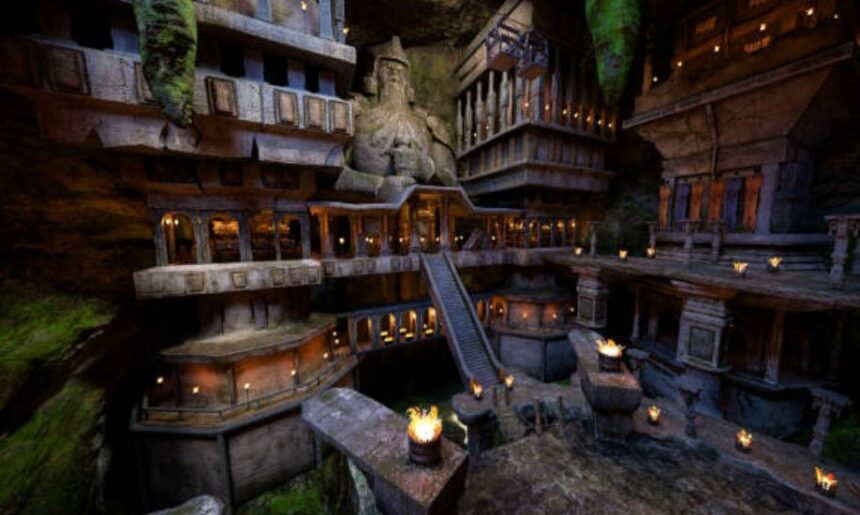Daz Studio Fantasy City: Bringing Imagination to Life
Creating a vibrant and detailed “Daz Studio Fantasy City” is an exciting venture for any 3D artist. Daz Studio offers a versatile platform to craft fantastical realms filled with intricate architecture, immersive atmospheres, and dynamic storytelling elements. Here, we explore the steps and tools needed to design an unforgettable fantasy city while focusing on creativity and functionality.
What is Daz Studio Fantasy City?
A “Daz Studio Fantasy City” is a 3D-rendered environment designed using Daz Studio, a powerful, free software for digital artists. These cities can blend themes such as medieval, steampunk, or futuristic designs to create imaginative worlds. Daz Studio provides access to pre-built environments, modular kits, and detailed assets, making it easier for users to construct custom cityscapes that suit their artistic vision.
Whether you’re a hobbyist or a professional, Daz Studio’s flexibility ensures you can design a “Daz Studio Fantasy City” for animation projects, games, or single renders.
How to Design a Daz Studio Fantasy City
Designing a “Daz Studio Fantasy City” requires thoughtful planning and creative execution. Here’s a detailed guide:
- Set the Theme and Tone
- Decide on the city’s overarching style: medieval, steampunk, futuristic, or a blend.
- Choose a setting: Is the city in a forest, on a mountain, or floating in the sky?
- Develop a backstory for the city to guide its design and culture.
- Choose or Create Assets
- Use Daz Studio’s pre-designed environments or modular kits like Shantara City, XI Fantasy Street, or Alpha City for unique cityscapes.
- Customize buildings, streets, and props to suit your vision.
- Lighting and Atmosphere
- Use lighting to set the mood: warm tones for medieval settings, neon for futuristic ones.
- Add atmospheric effects like fog or volumetric lighting for depth.
- Add Detailed Props
- Include elements like street lamps, market stalls, and dynamic props (e.g., flowing water, bustling crowds).
- Small details like barrels, carts, and flower pots bring realism.
- Refine and Render
- Position your camera for dramatic angles.
- Experiment with textures, depth-of-field, and lighting to achieve the desired look.
Advanced Techniques for a Daz Studio Fantasy City
- Creating Unique Architectural Styles
- Combine elements from various cultures or eras to design distinctive structures.
- Experiment with asymmetrical layouts or fantastical features like floating buildings or glowing facades.
- Integrating Animated Features
- Use animated water fountains, flickering lanterns, or moving vehicles to make your city dynamic.
- Simulate weather effects like rain or snow for added immersion.
- Adding Depth with Layering
- Incorporate multi-tiered layouts such as elevated walkways, underground tunnels, or sprawling rooftops.
- Layer textures for weathered or aged appearances.
- Using Plugins and Add-ons
- Enhance your project with plugins like Iray for realistic rendering or Daz Bridge for integrating assets into other software like Blender or Unreal Engine.
How to Come Up with Fantasy City Names
Naming your city is as important as designing it. Here are some tips:
- Use a Fantasy City Name Generator
- A fantasy city name generator can inspire thematic and unique names that suit your project’s tone.
- Draw from Culture and Language
- Base names on real-world dialects or cultural influences for authenticity. For instance, medieval cities might have names like “Eldarholm,” while futuristic ones might be called “Nova Haven.”
- Incorporate Natural Elements
- Combine nature with fantasy, such as “Mistvale,” “Sunspire,” or “Shadowfen.”
- Reflect the City’s Story
- Names can highlight the city’s history or purpose, such as “Arcanium” for a magical hub or “Wavehaven” for a coastal trade center.
How to Design a Fantasy City
Designing a fantasy city for Daz Studio or other mediums requires strategic planning:
- Map the Layout
- Sketch a layout with districts, landmarks, and natural features like rivers or mountains.
- Focus on Landmarks
- Add iconic structures like spires, ruins, or statues to anchor the city’s identity.
- Incorporate Historical Layers
- Include ruins, contrasting architectural styles, or signs of evolution over time.
- Add Movement
- Populate the city with dynamic elements like flying vehicles, water traffic, or bustling crowds.
Integrating Characters into Your Fantasy City
- Choosing Characters
- Select characters that align with your city’s theme, such as knights, merchants, or futuristic robots.
- Dynamic Interaction
- Place characters in action, such as trading at a market, patrolling the streets, or interacting with their environment.
- Customizing Characters
- Use Daz Studio’s customization tools to adjust clothing, poses, and facial expressions.
Bringing Your Daz Studio Fantasy City to Life
Enhance your city with animated elements and characters using Daz Studio’s tools. Add simulations for water, smoke, or fluttering flags to make the scene feel alive. Use plugins to create realistic physics and textures, ensuring a captivating visual experience. By combining visual detail, storytelling, and atmospheric effects, your “Daz Studio Fantasy City” can captivate viewers and immerse them in its world.
Conclusion
Designing a “Daz Studio Fantasy City” is a journey of creativity and innovation. With the right tools, thoughtful design, and compelling names, your city can transcend mere visuals to become a storytelling masterpiece. Whether medieval, futuristic, or entirely unique, your fantasy city is limited only by your imagination. Explore advanced techniques, integrate animated features, and bring life to your city with characters and dynamic details. The possibilities are endless in the world of Daz Studio.






